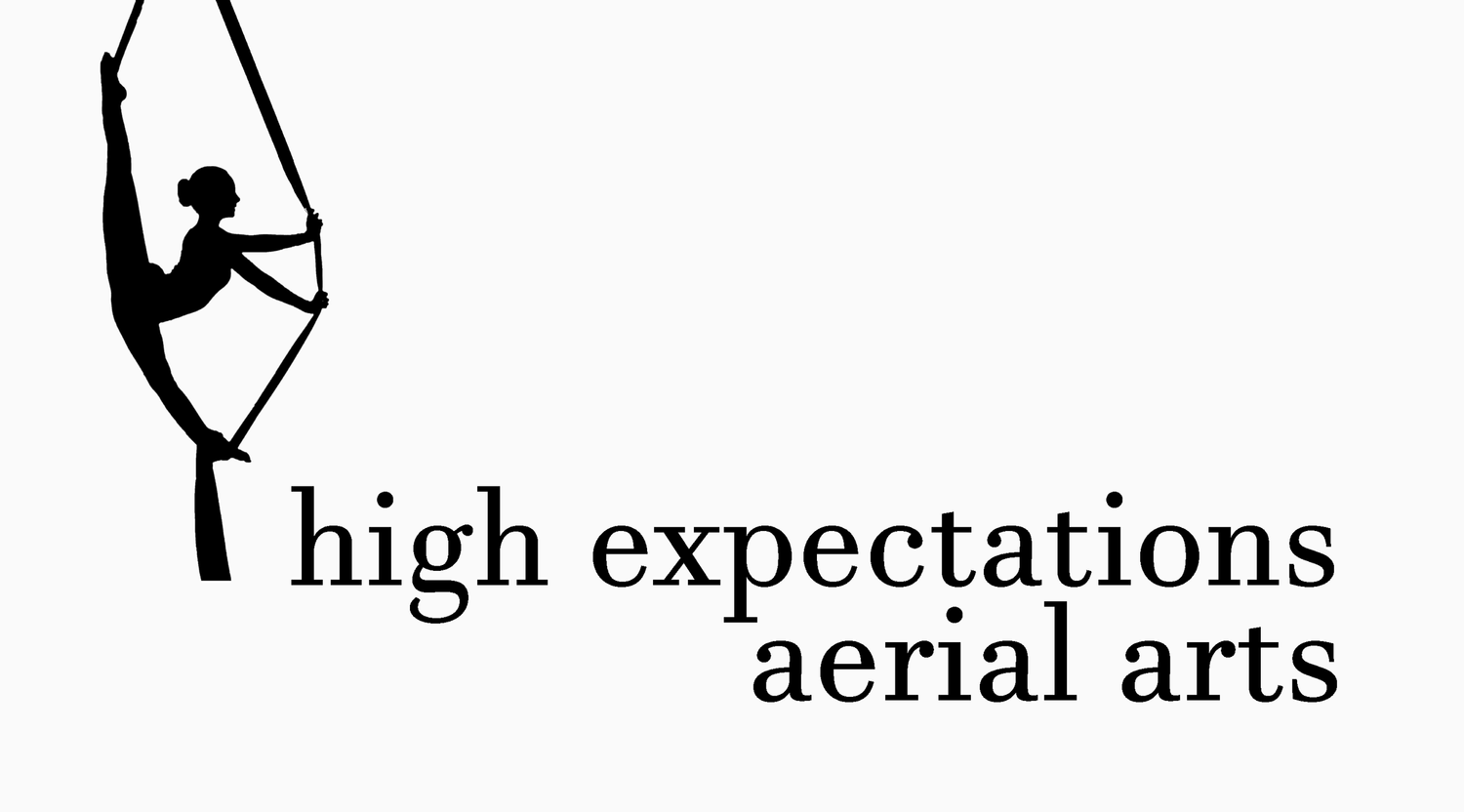Want to be a stronger aerialist? Stop doing so much aerial!!!
My first performance after rehabbing a cranky rhomboid. This was back in 2017 and I learned a LOT since then about training for longevity.
I have always been a mover, but when it comes to my technical training, I was a late bloomer. I started classical ballet training at age 13 and didn’t discover aerial until I was 27. However, once I started, I was all in and I trained very heavily. I was determined to push my body to the max and make up for lost time.
It worked… for a while. And then, I started having shoulder issues. Rhomboid, upper trapezius, and rotator cuff issues, to be specific. Lots of physical therapy, time off, and research got me to the other side, and through that painful and very frustrating journey, I discovered something: I was doing too much aerial.
Now, hear me out. I get that “OMG I have to be upside NOW or I’m going crazy!” feeling. I get it a lot, and I am at the studio a lot. (That’s what happens when you own a studio, train/perform/teach, and have two children who are circus kiddos). But I have completely changed the way I train.
Disclaimer: I am 35 years old and not trying to get into Cirque du Soliel. Your training routine might (and should) look very different from mine.
I now train aerial 3-4 times week. I’m talking traditional on-apparatus conditioning, skills training, climbing, learning new skills, etc. (Notice that conditioning is first on my list. If you want to be strong and fluid in the air, conditioning should be #1 on your list, too!). I also take 2-3 yoga classes per week (Yoga is a lot of pushing movement and dynamic stretching, so it complements aerial really really well. I do Ashtanga Yoga, which will get you SO strong, it’s crazy).
A few times a month, I go rock climbing at a local climbing gym. I also do my shoulder rehab physical therapy exercises 1-2 a week. Yes, they can be boring as heck, and I’m usually staring longingly at our bubble gum pink silks as I do 20 reps of my rotator cuff external rotation exercise, BUT if I skip out on this very crucial component of my training, I pay for it. I also spend quite a bit of time walking during the week, because I love it and it can be good cardio (if you pick up your pace).
I also put more priority on rest, including getting sufficient sleep (at least 8 hours every night) and taking rest days to give my joints a break.
And most importantly? I approach all of this physical activity from an anatomy-based, mindful place. I am constantly asking myself, “Why do I do this? Does this exercise benefit me? How does it benefit me? Is there a better way to do this exercise? Is there a better exercise to accomplish what I want? Is this just repetitive movement that is going to cause damage?”
I have also learned to understand the difference between “productive pain” (stretching or strengthening a muscle through a moderate level of discomfort) and “destructive pain” (pushing through sharp, shooting pain or ignoring my body’s messages telling me it’s too tired, too sore, or too tight to do what I’m asking of it that day). This is really important and will save you so much heartache. If your body is telling you something isn’t right, listen. Talk to your coach or find a physical therapist (there are some amazing circus physical therapists that have online resources and courses… I have a list of resources at the bottom of this post).
Goal setting is another important piece of this puzzle, and we will dive into that in some detail in another blog post.
In the meantime, take a look at your current training schedule and see if you can find some more balance. Comment below with your questions, and I will help answer them (or direct you to someone who can answer them better than I can!).
See you in the air soon!
Resources:
Shannon McKenna, AKA The Artist Athlete, has several online courses and regularly posts awesome stuff on her Instagram. Plus, she produces the Artist Athlete podcast. It's awesome.
Emily Scherb, PT, DPT, author of Applied Anatomy of Aerial Arts (which is amazing... go buy it!), has an online course on aerial and anatomy and posts conditioning and anatomy stuff on her Instagram.
Dr. Jennifer Crane, AKA Cirque Physio, has an online flexibility course and is also super active on Instagram.
And finally, while not aerial-specific, the duo Hypermobile Yogis on Instagram share some amazing videos and offer an online course.
What are YOUR go-to resources?! Share below!

